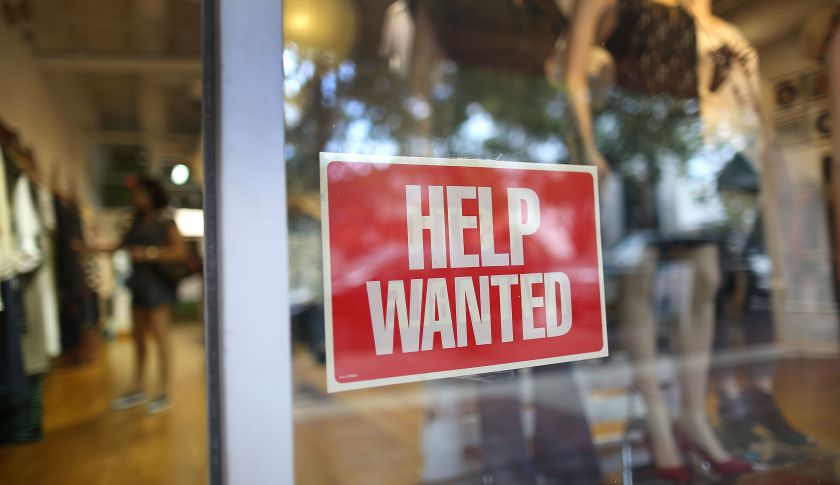According to the Bureau of Labor Statistics, the US economy added 209,000 jobs in July, which was more than had been expected.
The strong jobs growth was helped by a wave of hiring in the hospitality industry.
The unemployment rate edged lower to 4.3%, matching May’s figure which was the lowest since 2001.
Employment in food services and drinking places rose 53,000 – that sector has now added 313,000 jobs since July 2016.
Employment in health care and professional and business services also saw strong growth.
The dollar gained ground after the jobs report came out. It added a third of a cent to trade at $1.1843 against the euro.
President Donald Trump welcomed the report writing on Twitter: “Excellent jobs numbers just released – and I have only just begun.”
He also hailed Toyota and Mazda’s announcement that they were planning to build a $1.6 billion car plant in the US.
The investment aims to produce 300,000 vehicles per year, and expects to employ about 4,000 Americans.

Toyota and Mazda to Invest $1.6 Billion in US Car Plant
Fed Rate Could Be Raised on Jobs Growth Report
Donald Trump Threatens 35% Tax on US Companies that Move Jobs Overseas
The US has averaged growth of 184,000 jobs per month this year, roughly on pace with last year and well above the level needed to match increases in the working age population.
Many economists believe the gains have put the labor market at or near so-called full employment, and predicted that wages would rise as employers compete for workers.
But wage growth, while steady in July, has not accelerated.
The average hourly wage in the US was $26.36 in July, up 2.5% year-on-year. That was same pace as in June and slower than some prior months.
One reason for the lackluster wage growth may be that many of the job gains this year have been in lower-paid industries such as leisure and hospitality, where the average hourly wage was less than $15.50 in July.
That sector is responsible for almost a quarter of the more than 1m job gains since January.
There could also be more slack in the labor market than anticipated.
According to the Bureau of Labor Statistics, there were about 5.3 million people working part-time in July who would have preferred full-time work, little changed since June.
The number of discouraged workers – who are not looking for work because they do not believe there are jobs available – has also changed little since July 2016.
